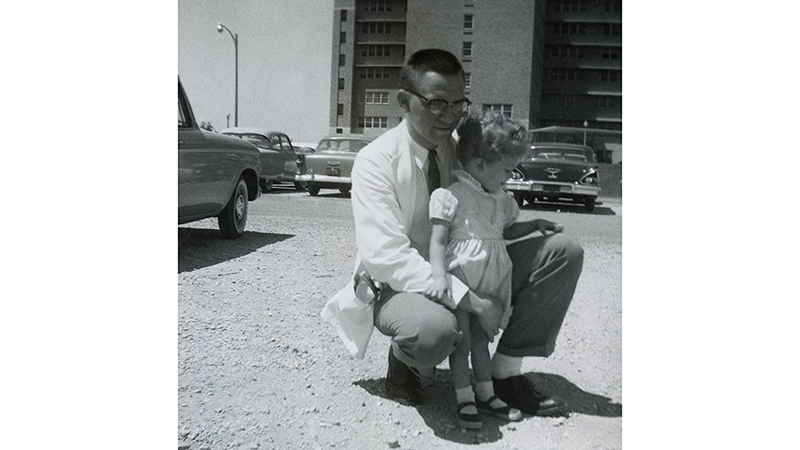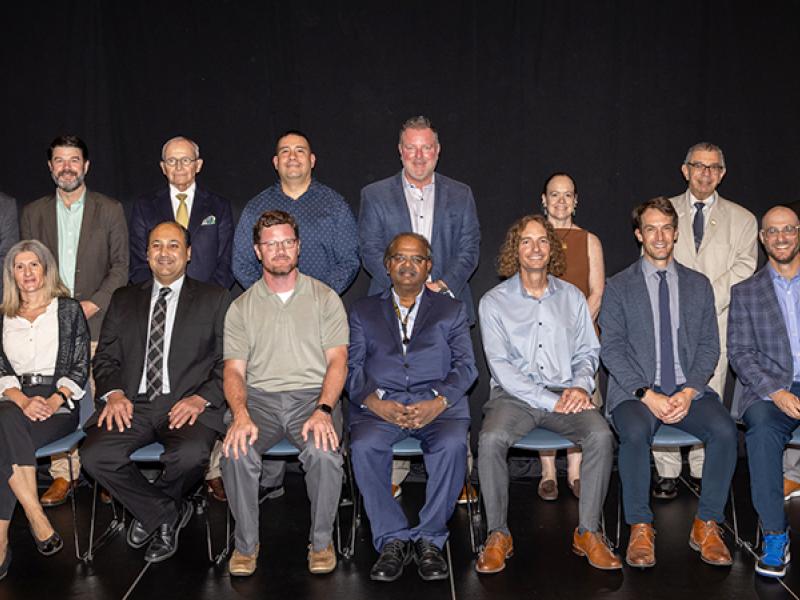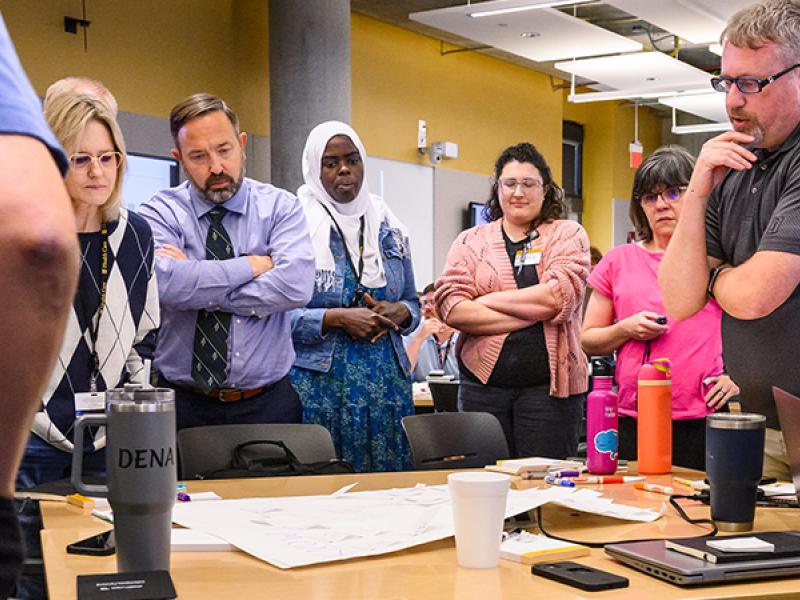
As a student with dreams of becoming a surgeon, Richard Schultz, MD ’60, was in the right place at the right time at the MU School of Medicine. The chair of the Department of Surgery, Hugh E. Stephenson, BA BS Med ’43, maintained such a close relationship with Schultz and the medical students that he joined in their Sunday afternoon touch football games.
Stephenson, who performed the first open-heart surgery at University Hospital in 1958, made a lasting impact on Schultz’s development as a doctor.
So did a curly haired 2-year-old girl.
Sandy McQuerry was born with a hole in her heart — a ventricular septal defect — and in May 1959, she traveled from her Kansas City home to University Hospital, where the problem could be fixed. Schultz was a third-year medical student assigned to her case. His job was to watch and learn from the attending physicians and to tend to some of Sandy’s basic needs in the hospital in the days before and after surgery.
“Sandy didn’t take to me initially. She probably didn’t take to anyone in a white coat initially — that’s usually how children are,” said Schultz, who ultimately won her over with chocolate milk and ice chips.
Her surgery went well, and Schultz and McQuerry built a bond as she recovered.
“I’m sure I spent more time her room than I did with most patients and more time than most doctors did with her,” Schultz said. “I remember I had my chair right by her bedside, and I think I spent three nights there with my finger on her radial pulse to make sure things were OK.”
Schultz kept in touch with Sandy’s family after she was released from the hospital. Later that summer, Schultz and his parents visited Sandy in Kansas City, and her family returned the favor by visiting the Schultzes in their hometown of New Franklin.
After graduation, Schultz went to Florida for surgical residency and, following a two-year stint in the Navy, he began a long career as a general and trauma surgeon. McQuerry went on to earn a master’s degree in social work from MU and to raise five children with her husband in Kansas City. For a few decades after her surgery, the families stayed in contact through occasional phone calls, letters and Christmas greetings, but they gradually fell out of touch.
Last winter, Schultz was reminded of McQuerry when he saw an item in the MIZZOU alumni magazine that mentioned the first open-heart surgery at University Hospital. Schultz rummaged through a box of keepsakes in his home in Fort Lauderdale, Florida, and found a 1981 letter from Sandy’s family that included a phone number. It seemed like a long shot that McQuerry would still have the same number, but he dialed the digits anyway.
In Kansas City, McQuerry’s phone rang.
“I saw on my caller ID it said ‘Richard Schultz,’ and I thought, ‘I know that name,’” McQuerry said.
They caught up on the highlights of each other’s lives. McQuerry’s mother had kept all the letters and photos from Schultz, and McQuerry subsequently went through them and shared them with Schultz, which brought back fond memories of his days as a medical student and the young patient who won him over.
Among the letters was one Schultz penned to McQuerry’s parents in August 1959 that summed up why he never forgot that little girl with the curly hair.
“Believe me, that Friday morning and the following three days and nights were just as long for me as they were for you,” Schultz wrote. “But I must truthfully say that when Sandy twice rolled over on Saturday and reached up and put her arm around my neck, that was the best ‘thank you’ I could ever receive.”
Alums, update your classmates on your professional and personal news





